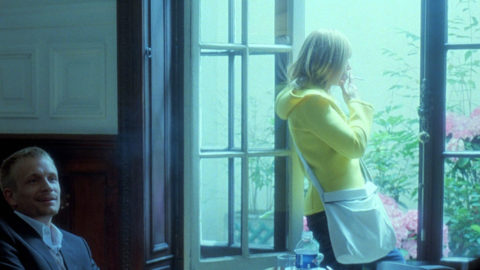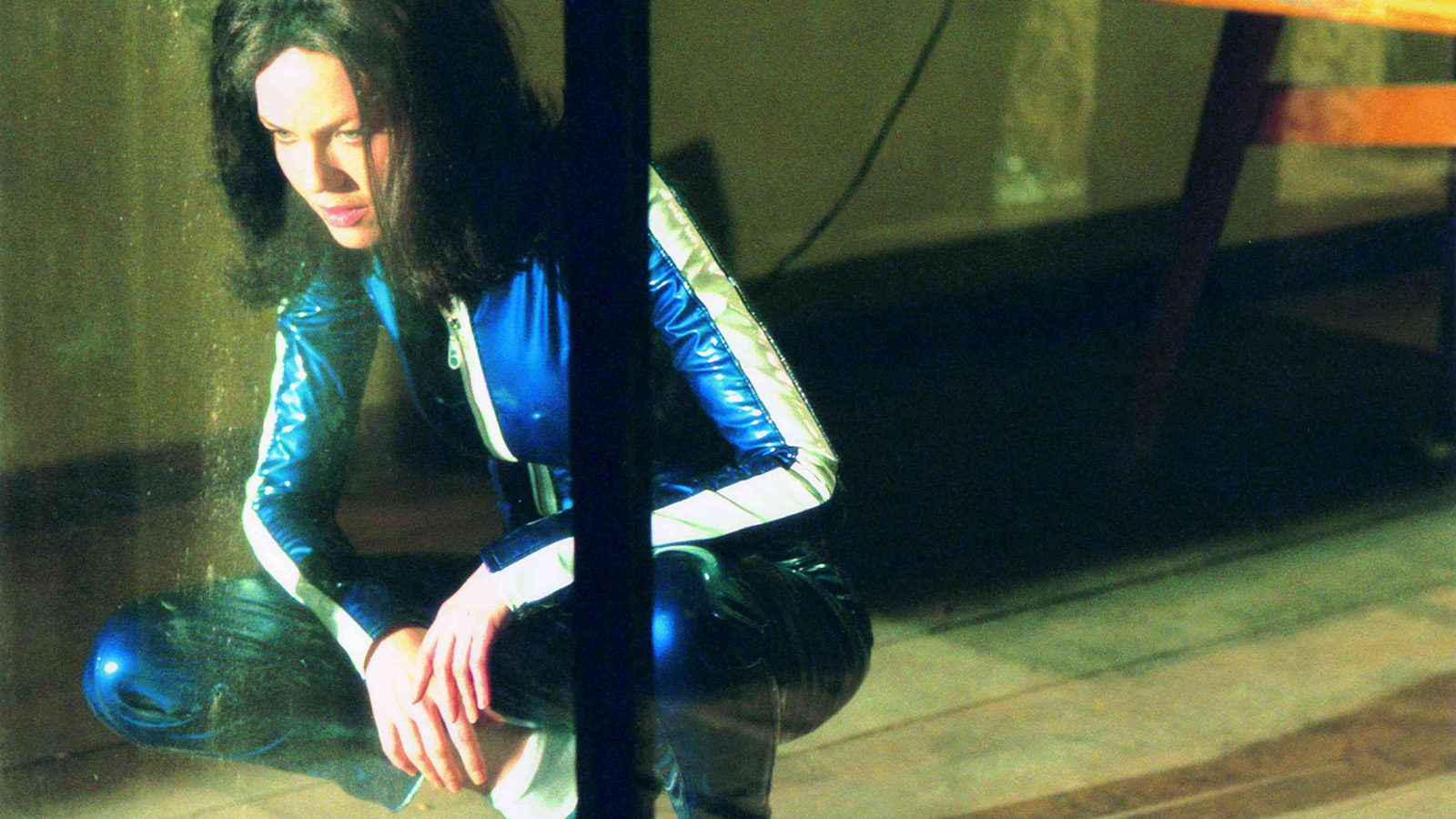
Movie of the Moment: demonlover
Much maligned and misunderstood, poorly received at the 2002 Cannes Film Festival, as well as by the French press and public, demonlover suffered a triple failure (critical, popular, and financial) in proportion to the hefty size of director Olivier Assayas's investment (artistic, symbolic, and financial). But the film is now enjoying a certain rehabilitation with its recent dvd release in France and upcoming U.S. theatrical run.
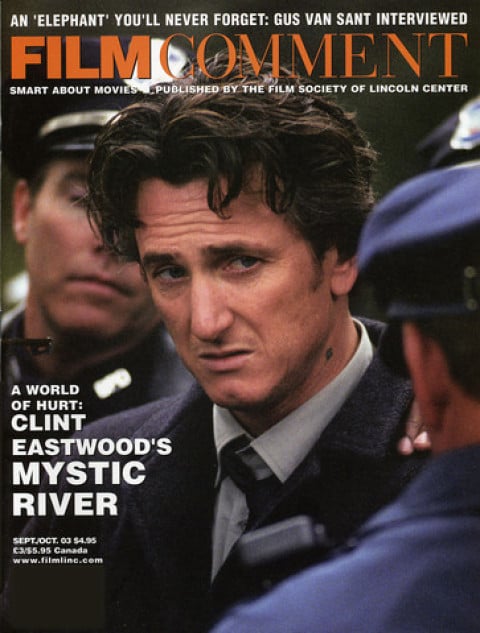
And that is only fair, as this elegant cyberthriller captures a certain state of the contemporary world with the acuity, sensitivity, and precision of a seismograph registering the planet’s tectonic shifts. Following François Truffaut’s adage, Assayas seems to have made demonlover “against” his previous film. Les Destinées was almost a caricature of a French superproduction, set in the past with period costumes and decors, inspired by a novel by Jacques Chardonne (François Mitterand’s favorite writer, Chardonne possessed a superb but highly classical style and a very conservative, “tied to the land” vision of France), anchored in the French tradition of historical, psychological, and literary cinema-in short, so very French. demonlover, conversely, is a film conjugated in the present, international and perhaps even extraterrestrial in scope, based on an original screenplay by Assayas, engaged with contemporary themes, and aligned with a coolly observational and behaviorist tradition that seems more Anglo-Saxon or Asian than French. To exaggerate a little, Les Destinées would be Flaubert, and demonlover, Baudrillard: the former a product of an ultraclassical culture folded back on its temporal and geographical territory, the latter an object belonging to contemporary, borderless, globalized modernity.
demonlover begins in the first-class section of a commercial airliner. Businesspeople sleep or discuss their contracts. We see Westerners and Easterners, and we hear several different languages, as violent images silently unfold on the cabin’s video screens. From these initial shots, all of the film’s aesthetic, thematic, spatial, and sociological risk-taking is set in motion: transitional spaces, anonymous locations, movement and networks (the images and the airplanes), the significant presence of women, the superficial chilliness of the social theater, the international aristocracy of modern capitalism.
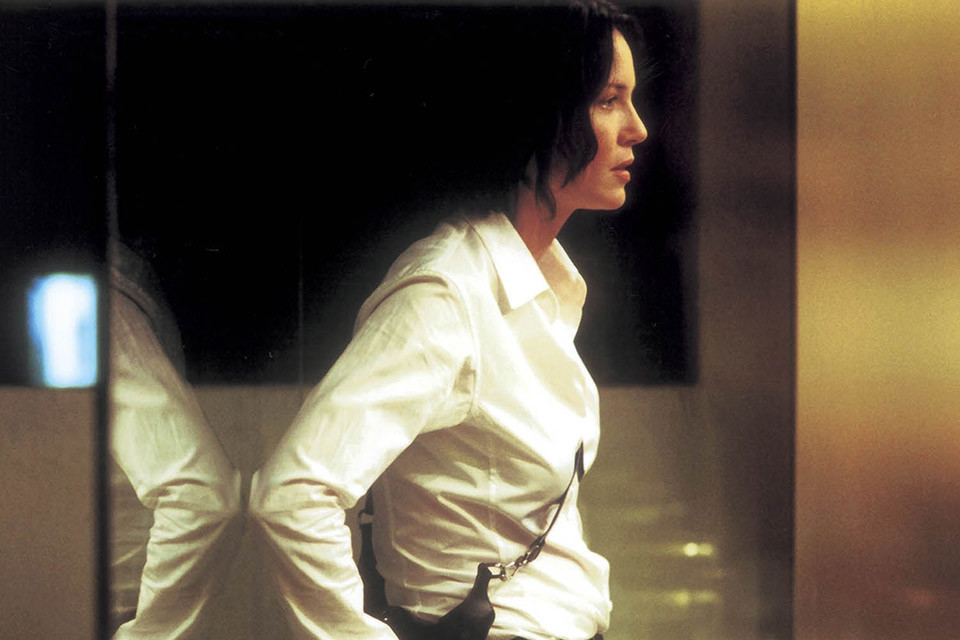
Demonlover
Among these demigods of the business world, we discover Diane (Connie Nielsen, as goddess of the hunt?), Karen (Dominique Reymond), Thierry (Charles Berling), and their boss, Monsieur Volf (Jean-Baptiste Malartre, as the wolf?). Barely three minutes into the film, Diane goes off to the toilet to secretly drug Karen’s Evian. Thus, the worm is in the apple from the start, suspicion is injected, and the film has been primed to go off like a hand grenade. Gradually, we discover that all of these characters work for companies involved in new media (erotic Japanese manga, pornographic animation, Internet sites devoted to sadomasochism), that these companies are in a pitched, merciless battle for market domination, that our “heroes” sometimes work for several camps as double agents, that everyone observes and suspects everyone else, that those who spy are spied upon in turn, that behind its temperate, well-policed appearance, neocapitalism wages violent, covert dirty wars in which the end justifies every means.
This is the political-thriller aspect of demonlover, and if we stay with this single facet of the film, it can be regarded as a simple update and reinvention of the classic spy drama or war movie, which would already be a plus in itself. But for Assayas, this story of industrial espionage is only a frame of reference (forging a link to genre cinema), a pretext for a scenario, a fictional anchor point. The filmmaker doesn’t attempt to detail his characters’ psychology or motivations, he doesn’t try to clarify every plot twist-which is why certain critics have reproached him, getting a little lost in what they found to be a foggy scenario. Assayas doesn’t offer the thousandth variation on a spy story; to give his film an air of a thriller, it is enough for him to insinuate suspicion, paranoia, and a sense of the characters’ duplicity-just as it is enough for Diane to inject a few drops of a sedative into her colleague’s water to eliminate her. For the filmmaker, it matters little who is spying on whom and why, or even to separate the good guys from the bad. What matters is to plunge into a world of opacity and false appearances, where from moment to moment anyone could be good or evil, innocent or guilty, victim or executioner. If Assayas somewhat neglects the pure narrative thrust of his material, it’s because he considers it secondary. What is essential to him is to capture the condition of the contemporary world-a scent, an atmosphere-to see what effect this state has on individuals, and to devise a form that is itself contaminated by that condition, a style that is at once a product, a reflection, and a critique of the epoch rather than a mise-en-scène that simply assembles a series of lectures on the matter at hand.
Assayas has been criticized for either denouncing new media too readily or for not viewing this new universe with a sufficiently critical eye. He presents extracts from pornographic anime or scenes from an Internet torture site, but without extending the duration of these shots toward voyeuristic obscenity, proving that he is at once fascinated and disturbed by certain contemporary mutations of images and their commerce. Consequently, he aims neither to denounce nor to blindly endorse porn mangas, sadistic websites, or mercantile cynicism: He confines himself to depicting an existing reality while leaving the spectator free to reflect, and to inventing a form that best suits that reality.
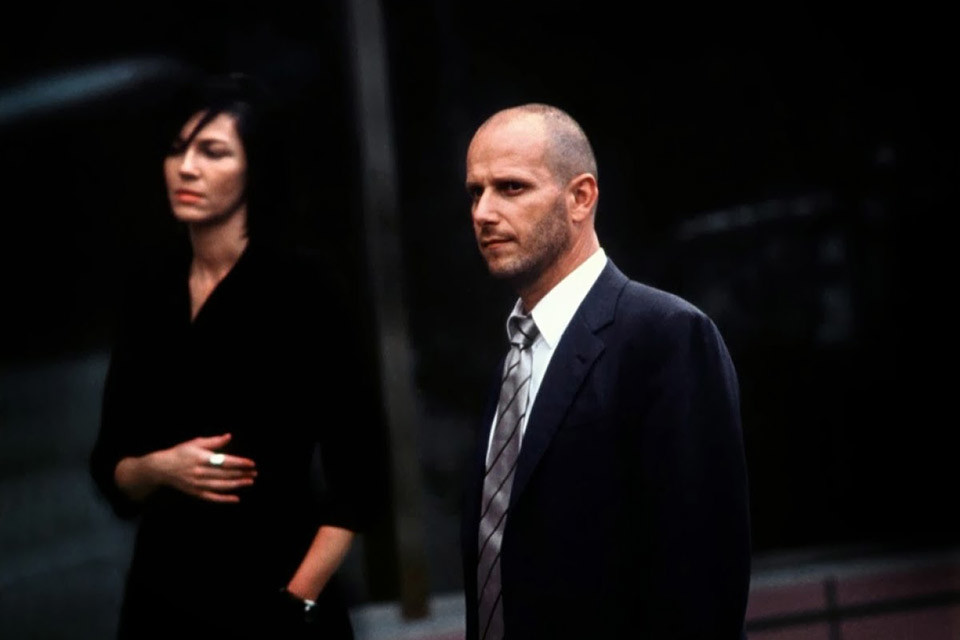
Demonlover
That’s why he sets most of his scenes in transitional spaces (airplanes, airports, hotels, cars, offices) with high-tech decors, emphasizing neon lights, corridors, glass surfaces, transparencies, and reflections, and why he juggles countries, languages, and time zones. The film’s protagonists no longer have a home country, no longer have families, no longer have ways of distinguishing day from night. They are denied all spatial and temporal anchorage, as if they themselves exist in the digital realm. The cold violence of business, the luxurious spaces within which these people operate, the world of images they deal with, and the deprivation of any reference point seem to cut them off completely from reality, emptying them of their emotions and their humanity. They are pale, incapable of feeling or expressing feelings, ready to kill one another (metaphorically or literally). They are modern vampires, maneuvering in a world of illusions, reflections, and trompe-l’oeil effects. Their translucent offices belie their opaque transactions and motivations. Vampires infecting one another, they have themselves been vampirized by the images of sex that they sell and consume. The more omnipresent sex is, the more obsessional and violent in visual form, the less these characters make love; their libidos have been drained.
As cold and stylized as a fashion magazine, Assayas’s mise-en-scène harmonizes with his subject: The fluidity of his camera movements, the precise composition of his frames, the cold, bluish tint of his lighting, and the score by Sonic Youth (an integral part of the film’s mise-en- scène, as well and its narrativity, soundscape, and interconnectedness) work together to express the cold, repressed violence of our contemporary universe, camouflaged by a veneer of sophisticated civilization. It may perhaps be a fact of modern sociology that women occupy a preponderant position in this world without pity, from the top (the power elite) to the bottom (sex slaves). But it’s even more certainly a sign of Assayas’s dark desire: One feels strongly that, in this icy choreography of predators and prey, the director finds the most intense pleasure in filming the fights between women, whether they are physical or rhetorical, expressed or repressed.
At once illness and antidote, wound and knife, chilling and fascinating-in short, demonic and loving-demonlover is a beautiful and disturbing contemporary filmic object, concentrating within itself most of Assayas’s obsessions (Feuillade, Bergman, Kenneth Anger, women, New York rock music) and in which the filmmaker seems to say to us, “To denounce monstrosity is only a form of hypocrisy, because we are all fascinated by the monstrous and distressing. We are all responsible for the times we live in, for better and for worse.”



